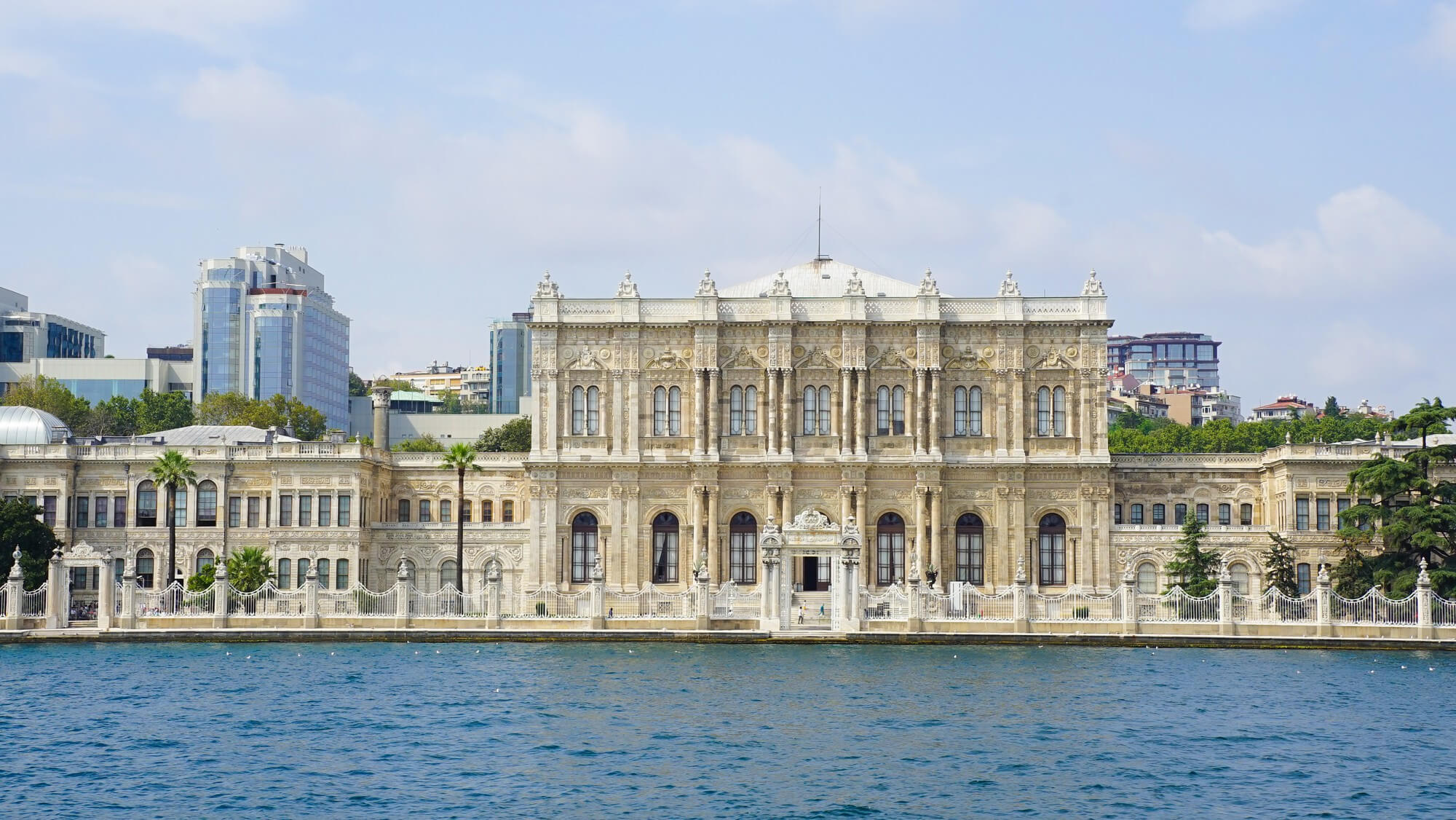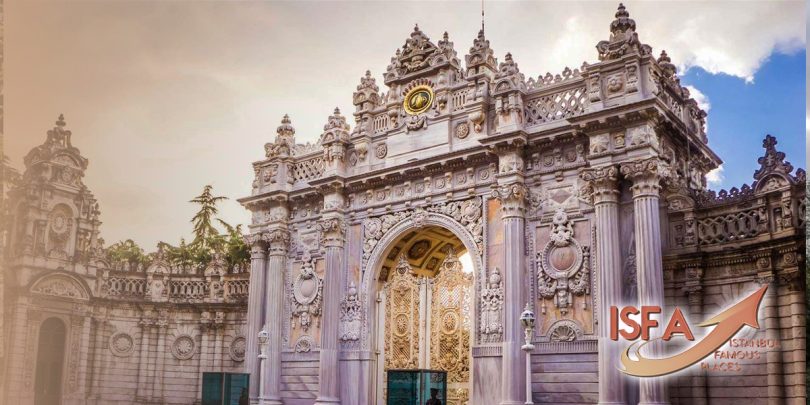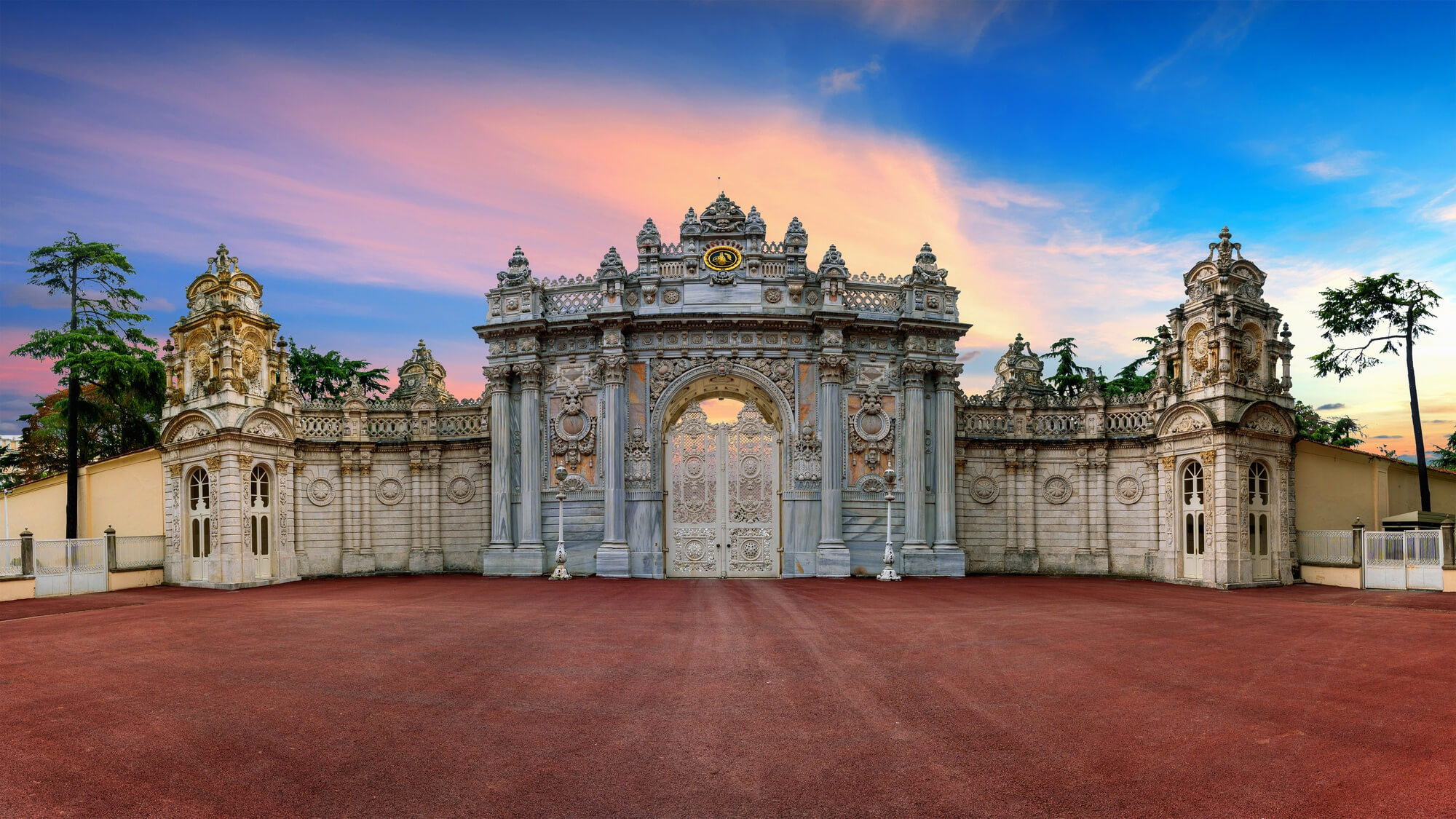Explore the Grandeur of the Ottoman Empire at Dolmabahçe Palace
Istanbul is a city steeped in history, with numerous landmarks showcasing the magnificence of its past. One such notable landmark is Dolmabahçe Palace. Located on the European coast of the Bosphorus, the palace serves as an emblematic symbol of the Ottoman Empire’s opulence and a notable site within Istanbul’s historic landscape.
What does Dolmabahçe Mean in English?
Dolmabahçe derives its name from the Turkish words “dolma,” meaning filled, and “bahçe,” meaning garden. Essentially, Dolmabahçe means “filled garden” in English. The palace was named after the garden that was filled with soil to construct the site. This beautifully designed palace, with its intricate interior and exterior details, stands as a testament to the grandeur and sophistication of Ottoman architecture.
Dolmabahçe Palace History
Dolmabahçe Palace was commissioned by Sultan Abdülmecid I and constructed between 1843 and 1856. The sultan felt that the Topkapi Palace did not adequately reflect the modernization and progress of the Ottoman Empire and decided to build a new palace with a more contemporary design. This decision marked a significant departure from the traditional architectural style of the empire and represented the sultan’s desire for modernization.
Bosphorus Landmarks
The palace stands along the Bosphorus Strait, offering breathtaking views of the water. It is not just the grandeur of the palace itself but its location that makes it one of the most iconic Bosphorus landmarks. The Bosphorus has always been of great significance in Turkish history, and Dolmabahçe Palace, with its European-style architecture and stunning waterfront location, encapsulates this historical and cultural significance.
Ottoman Architecture
Dolmabahçe Palace is a magnificent example of Ottoman architecture. Designed by the famous architect Garabet Balyan and his son Nigoğayos Balyan, the palace is a blend of various European architectural styles, including Baroque, Rococo, and Neoclassical. This marked a significant departure from the traditional Ottoman architectural style and represented the empire’s modernization efforts. The palace’s design includes intricate details, expansive gardens, and luxurious furnishings that showcase the sophistication and grandeur of Ottoman architecture.

Palace Interior Design
The interior of Dolmabahçe Palace is as spectacular as its exterior. The palace is home to 285 rooms, 44 halls, 68 toilets, and 6 Turkish baths. It boasts luxurious furnishings, intricately designed carpets, and magnificent chandeliers, including the world’s largest Bohemian crystal chandelier in the main hall. The interior also features a blend of Ottoman and European styles, reflecting the empire’s efforts to modernize and adopt European influences while still maintaining its traditional aesthetic.
Dolmabahçe Architecture
The architecture of Dolmabahçe Palace is a sight to behold. The palace spans an area of 45,000 m² and features a symmetrical design. The exterior of the palace is made of white marble, while the interior is adorned with gold leaf, crystal, and valuable stones. The palace features a blend of Ottoman and European architectural styles, with baroque, rococo, and neoclassical elements. Dolmabahçe Palace architecture stands as a testament to the opulence and grandeur of the Ottoman Empire.
Dolmabahçe Museum
Today, Dolmabahçe Palace serves as a museum and is open to the public. Visitors can explore the palace’s luxurious rooms, grand halls, and beautiful gardens. The museum showcases the rich history of the Ottoman Empire and offers insight into the lives of the sultans who once called the palace home. Dolmabahçe Museum is a must-visit destination for anyone interested in Ottoman history and architecture or simply appreciating the beauty of this magnificent palace.
Mustafa Kemal Atatürk’s Connection
Dolmabahçe Palace holds a special place in the hearts of Turkish people as it was the residence of Mustafa Kemal Atatürk, the founder of the Republic of Turkey, during his final days. Atatürk spent his last years in the palace and passed away there on November 10, 1938. Today, his room is preserved as it was at the time of his death and serves as a memorial to this great leader.
Dolmabahçe Palace is a symbol of the Ottoman Empire’s grandeur and a notable landmark within Istanbul’s historic landscape. From its breathtaking location along the Bosphorus to its luxurious interior and stunning architecture, Dolmabahçe Palace is a must-visit destination for anyone traveling to Istanbul.
Visit to the Palace
A visit to Dolmabahçe Palace is a journey through time, as it encapsulates the evolution of the Ottoman Empire in its architecture, interior design, and historical significance. The palace is divided into two main sections: the Selamlik or official section, and the Harem or private section. The Selamlik was used for official functions and meetings, while the Harem served as the private residence of the Sultan and his family. Both sections of the palace are open to the public and can be explored with a guided tour.
Gardens of Dolmabahçe
The gardens of Dolmabahçe Palace are as exquisite as its interior. The gardens are beautifully landscaped with a variety of plants, flowers, and trees, including palm, cypress, and magnolia trees. The gardens also feature ornamental ponds, marble statues, and decorative fountains. Walking through the gardens of Dolmabahçe is a delightful experience that allows visitors to appreciate the beauty of nature while surrounded by the stunning architecture of the palace.
Historical Events
Dolmabahçe Palace has been the backdrop for several important events in Turkish history. It served as the administrative center of the Ottoman Empire from 1856 to 1887 and again from 1909 to 1922. It was also the site of the first meeting of the Turkish Grand National Assembly in 1920, and the place where the Ottoman Caliphate was abolished in 1924. These historical events mark Dolmabahçe Palace as a symbol of both the Ottoman Empire’s past and the Republic of Turkey’s future.
Importance in Modern Turkey
Today, Dolmabahçe Palace is one of Turkey’s most important cultural and historical sites. It serves as a museum and a memorial to the founding father of the Republic of Turkey, Mustafa Kemal Atatürk. The palace is also used for official government ceremonies and events. Its historical significance and architectural beauty make it one of Istanbul’s most visited landmarks, attracting millions of tourists from around the world each year.
Fascinating Facts
1. Dolmabahçe Palace was the first European-style palace in Istanbul.
2. It took 13 years to build and was completed in 1856.
3. The palace cost five million Ottoman gold lira, equivalent to 35 tonnes of gold.
4. The palace features 14 tonnes of gold leaf used to gild the ceilings.
5. Dolmabahçe Palace has the largest collection of Bohemian and Baccarat crystal chandeliers in the world.
Visiting Dolmabahçe Palace
Visiting Dolmabahçe Palace is a must-do activity for anyone traveling to Istanbul. The palace is open to the public, and guided tours are available in several languages. The tours provide detailed information about the palace’s history, architecture, and the lives of the people who lived there. It is recommended to purchase tickets in advance to avoid long queues, especially during the peak tourist season.
Dolmabahçe Palace is more than just a beautiful building; it is a symbol of the Ottoman Empire’s past and the Republic of Turkey’s future. Its stunning architecture, luxurious interior, and beautiful gardens make it a must-visit destination for anyone traveling to Istanbul. Whether you are interested in history, architecture, or simply want to enjoy the breathtaking views of the Bosphorus, Dolmabahçe Palace is a must-see.


